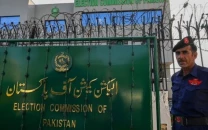Monsoon rains, flash floods claim 45 lives across Pakistan
K-P sees highest toll with 21 dead, including 10 children; 13 killed in rain-related incidents across Punjab

Heavy rain and flash flooding across Pakistan have killed 45 people in just a few days since the start of the monsoon season, disaster management officials said Sunday.
The highest toll was recorded in the province of Khyber-Pakhtunkhwa (K-P) that borders Afghanistan, where 10 children were among 21 killed.
The disaster management authority said 14 of those victims died in the Swat Valley, where media reported a flash flood swept away families on a riverbank.
In Punjab, along the frontier with India, 13 fatalities have been recorded since Wednesday. Eight of them were children who died when walls or roofs collapsed during heavy rain, while the adults were killed in flash floods.
Also Read: DC Swat removed, four officials suspended
At least 11 other deaths related to the monsoon downpours were recorded in Sindh and Balochistan provinces. The national meteorological service warned that the risk of heavy rain and possible flash floods will remain high until Saturday.
Last month, at least 32 people were killed in severe storms in the country, which experienced several extreme weather events in the spring, including strong hailstorms.
Pakistan is one of the world's most vulnerable countries to the effects of climate change, and its 240 million residents are facing extreme weather events with increasing frequency.
Meanwhile, the National Emergencies Operation Centre (NEOC), a wing of the National Disaster Management Authority (NDMA), has issued multiple weather alerts as widespread rain, windstorms, and thunderstorms are expected across the country from June 29 to July 5.
نیشنل ایمرجنسیز آپریشن سینٹر کے مطابق
— NDMA PAKISTAN (@ndmapk) June 29, 2025
29 جون سے 5 جولائی تک ملک بھر میں شدید مون سون بارشوں اور ممکنہ سیلاب کا خطرہ۔
کشمیر گلگت بلتستان، اسلام آباد، پوٹھوہار: ایبٹ آباد، مانسہرہ، ہری پور، بالاکوٹ، مری، گلیات میں موسلادھار بارش، لینڈ سلائیڈنگ اور ندی نالوں میں طغیانی کا خدشہ pic.twitter.com/d8ApdzqOSs
The NEOC warned of urban flooding, flash floods, and landslides in several regions, including Islamabad, Kashmir, northeast Punjab, the Potohar region, and upper and central Khyber Pakhtunkhwa. Low-lying areas in cities such as Peshawar, Rawalpindi, and Islamabad may be particularly vulnerable between 9pm and 4am on June 29.
Flash flooding and landslides are also possible in the Hazara and Malakand divisions, as well as in the Jhelum and Poonch valleys. The Swat and Kabul rivers may experience medium to low-level flooding, while glacial streams in Chitral and Hunza pose additional risks.
In southern Sindh, including Karachi, Hyderabad, Thatta, and Badin, heavy rainfall is expected from July 2, increasing the threat of urban flooding.
Provincial and district authorities have been advised to stay on high alert and ensure that precautionary measures and public warnings are effectively communicated.




















COMMENTS
Comments are moderated and generally will be posted if they are on-topic and not abusive.
For more information, please see our Comments FAQ